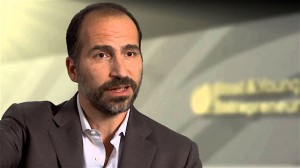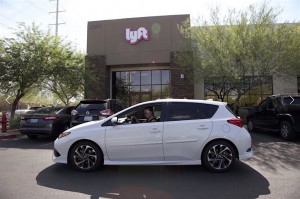The competition between Uber and Lyft has escalated a little more after the latter claimed it was the biggest ride-hailing service in the U.S. Uber quickly shot down the self-brag by Lyft.
San Francisco-based Lyft claims 94% of the U.S. population can request a ride, meaning it has the largest geographic footprint of any ride-hailing service. Uber disputed the claim, suggesting that Lyft is fudging what it means to be “available.”
Lyft that its service was now “fully operational” in 40 states, which means Lyft users can get a ride with the service anywhere in the state. Overall, the company has drivers in every state except Arkansas or South Dakota.
It’s the “fully operational” part that Uber points to when it disputes the claim. Uber provides full services to 75% of the country, according to Uber that means being picked up with seven minutes of requesting a ride. Much of Uber’s coverage is in urban and suburban areas in the U.S.
(Lyft tracking to double ridership in 2017. Click Here for the story.)

The Uber board selected Expedia CEO Dara Khosrowshahi to take the place of Travis Kalanick as Uber's CEO.
Considered by most to be larger because of the number of rides is provides, Uber isn’t entirely clear about how many states it’s available in. Uber officials have said the service is available in 35-40 states and 80 countries.
Regardless of how one determines which service is bigger, Lyft has been making substantial gains compared with Uber, which has been struggling. Lyft announced last month it had already surpassed its ride totals for all of 2016.
“Since Lyft’s founding in 2012, our goal has always been to create better transportation, decrease the amount of cars and traffic on the road, and bring safe and affordable rides to the entire country,” Jaime Raczka, Lyft’s regional director, said in a statement.
(Click Here for more about Uber’s new CEO Dara Khosrowshahi.)
Lyft is looking to grow its service in less urban areas, but riders may have to wait a while for a driver. That makes Uber more appealing for some when looking at the seven-minutes-or-less statistic from Uber.
The two services are now battling to attract drivers. Uber has seen a steady loss of drivers to its competitors, not just Lyft, after the company slowly took away many of the incentives that made it possible to make a living as an Uber driver.
Lyft hopes to lure new drivers to its service through a variety of incentives, including hourly guarantees and its power driver bonus program rewarding frequent drivers. Uber has responded by reinstating some incentives, raising hourly rates and allowing drivers to be tipped.
(To see more about the problems at Uber that led to Travis Kalanick’s departure, Click Here.)
Nearly a year of upheaval at Uber has allowed Lyft to grab customers and drivers from Uber, but those days may be over. Uber just hired former Expedia CEO Dara Khosrowshahi to take over for the deposed Travis Kalanick, who helped found the company, but was also at the center of many of the company’s recent problems.

